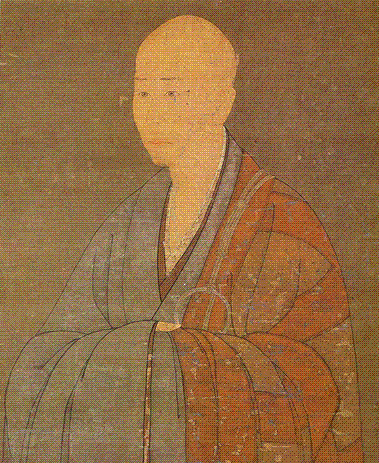| MOUNTAIN
SILENCE |
|
| Issue 9: Spring | |
|
Book
Review
A
Zen Life in Nature: Reviewed by Michael Elsmere |
 Muso Soseki |
|
Long before I knew about Buddhism I was fascinated
by the formal Zen gardens that I sometimes came across in my travels.
Like much of the very best abstract art they often puzzled me but
I felt strangely attracted by their spare, ordered beauty, their
mystery.
‘A Zen Life in Nature,’ is a biography of Muso Soseki (1275 –1351) who left behind him five major gardens, amongst them Saihoji in Kyoto. Even today in a form much changed from Soseki’s original vision, this is one of the great Zen gardens of the world and represents perhaps the culmination of his gardening practice. To Soseki, designing new gardens and altering existing ones was an integral part of his practice of Zen. All those who visit them even today come into contact, however superficially, with his highly enlightened aesthetics and consciousness. These had been cultivated over many years of devoted practice, often surrounded by a few disciples in the wild remote mountains of China. One of the major influences in his life was the ancient story of Ryu Rassu who had been a reclusive monk of the T’ang era (618-907). Ryu was a legendary figure in the Zen world for his dedication and commitment to the enlightened life spent in the heart of nature. Often Soseki, much sought by Emperors and rulers
because of his wisdom and diplomatic abilities, would, when possible,
retire to the wilderness in his intent to be a part of ‘distant
mind’, without leaving his place in this realm. Again he would
be called forth or sought out by young monks wishing to become his
disciples. After these periods of intense practice he, on a number
of occasions, planned and built a garden. This would express the
insights that he had acquired with the natural materials at hand.
Maybe it would be the relationship between life and death, or the
physical and spiritual worlds, or some other refined aspect of his
vision. In these artistic but earthy endeavours, he and his monks
strove to express that ‘something,’ which is almost
inexpressible. With stones, water, earth and trees, with wood and
plants, Soseki in his gardens leaves us subtle pointers to the nature
of reality and our place in it.
|
|